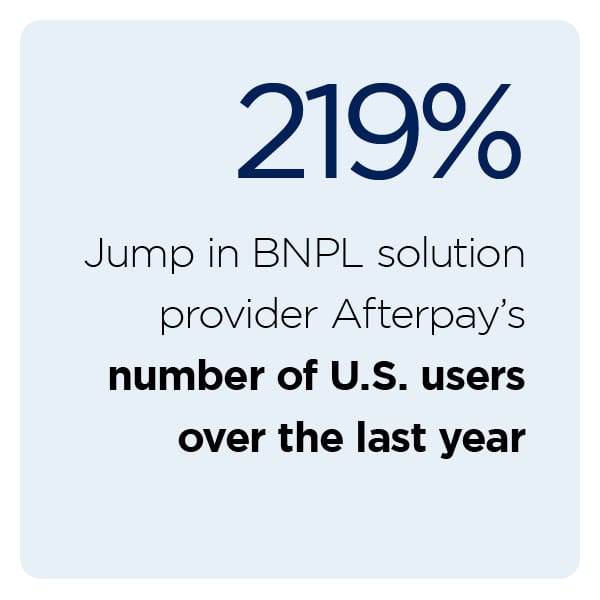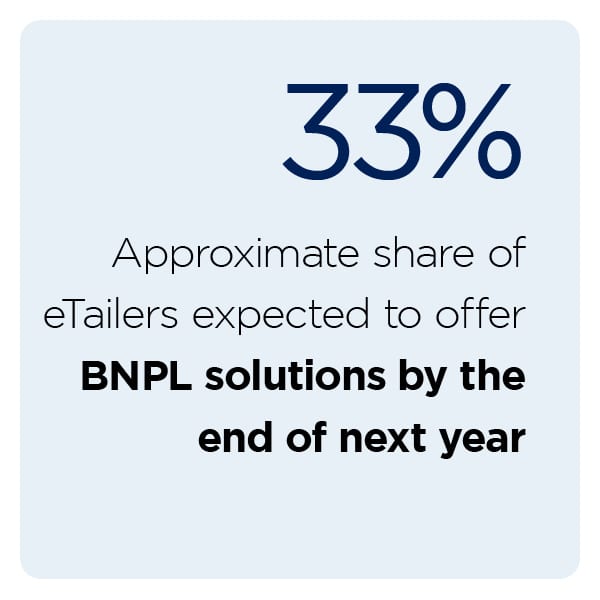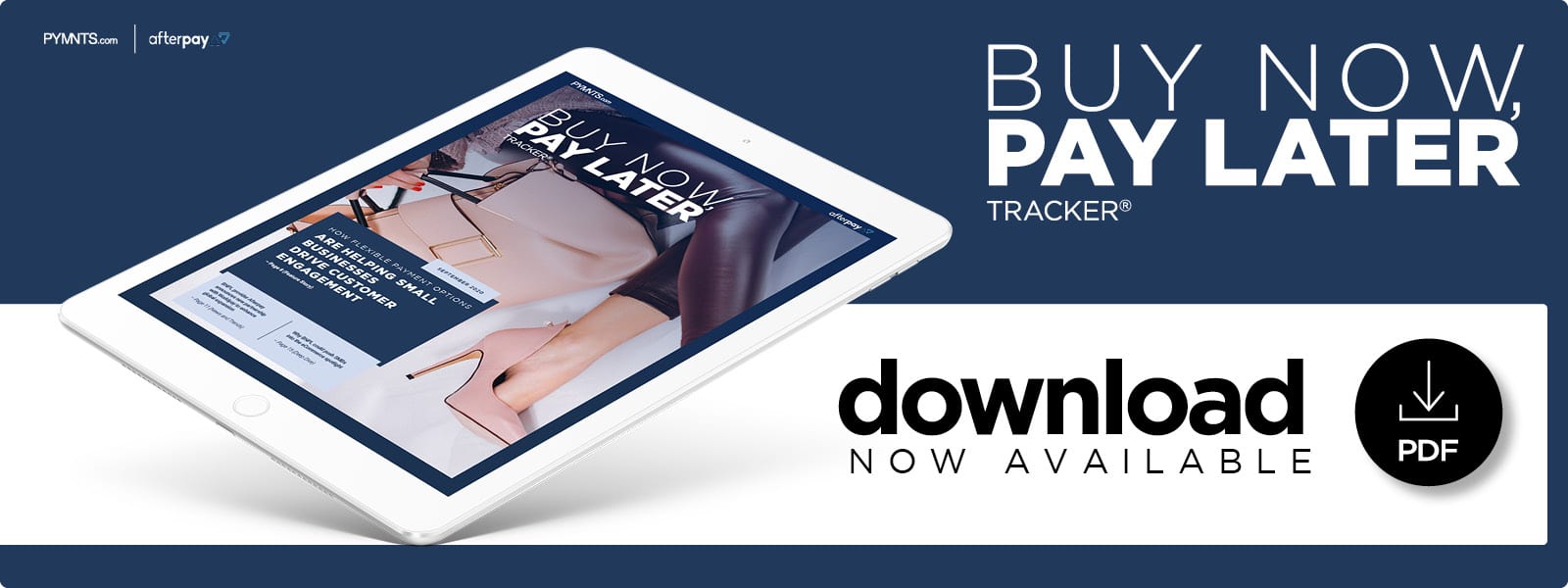Report: How Installment Payment Options Help Small Retailers Play Big

Online shopping has hit a new high, with consumers spending more time at home and on their computers during the ongoing COVID-19 pandemic. One study revealed that the crisis has put eCommerce adoption five years ahead of predictions, with the sector expected to expand 20% by the end of the year.
Competition among businesses is growing increasingly fierce as more consumers shop digitally, however. Small- to mid-sized business (SMB) owners could be at a particular disadvantage in this space, as they must go up against much-larger, often digital-native retail giants when attempting to distinguish themselves online.
 Many SMBs are discovering that offering flexible payment methods can help them gain an edge, especially as customers stretch their finances during the health crisis. In the “Buy Now, Pay Later Tracker®,” PYMNTS examines how buy now, pay later (BNPL) options are especially in demand, as these solutions can decrease cart abandonment and encourage customers to pay in installments for everything from everyday purchases to big-ticket items.
Many SMBs are discovering that offering flexible payment methods can help them gain an edge, especially as customers stretch their finances during the health crisis. In the “Buy Now, Pay Later Tracker®,” PYMNTS examines how buy now, pay later (BNPL) options are especially in demand, as these solutions can decrease cart abandonment and encourage customers to pay in installments for everything from everyday purchases to big-ticket items.
Around The Buy Now, Pay Later World
The nation’s 30 million SMBs have been hit hard by the health crisis, which has dramatically affected brick-and-mortar commerce and pushed many small firms online as more consumers go digital. This shift has also led SMBs to find payment methods that can help them better accommodate budget-conscious consumers’ needs, leading many businesses to offer BNPL solutions to accomplish this.
BNPL options are rapidly growing more popular worldwide during the pandemic. Such flexible payment methods have become top picks for online shoppers in the United Kingdom, for example, with 39% of consumers in one recent study saying they used such plans to make eCommerce purchases. The survey also  found that 56% of consumers chose BNPL methods to defer payments’ costs without incurring interest, which would be a factor when using credit cards.
found that 56% of consumers chose BNPL methods to defer payments’ costs without incurring interest, which would be a factor when using credit cards.
BNPL payment methods’ usage is also growing in Australia, especially among millennials. Many of the nation’s large retailers and department stores offer installment payment plans from providers like Afterpay, and consumers are turning to these options in greater numbers to avoid the fees and debt typically associated with credit products.
For more on these and other buy now, pay later headlines, read the Tracker’s News and Trends.
BNPL Options Boost Margins, Broaden Exposure For Small eCommerce Businesses
Digital sales are flying high in the retail sector. Recent data revealed that consumers spent approximately $347 billion at eCommerce retailers within the first six months of 2020, for example, compared to $266 billion spent during the same period in the prior year. Small eCommerce businesses must work hard to differentiate themselves from their much larger competitors even in this robust digital economy, however, and many SMBs are discovering how BNPL options can engage their customers and grow brand awareness. In this month’s Feature Story, Markesha Tillman, founder of women’s The Slay Brand, discusses how offering installment payment plans helped grow the business and boost its exposure.
 Deep Dive: How BNPL Options Can Help Small eCommerce Businesses Compete
Deep Dive: How BNPL Options Can Help Small eCommerce Businesses Compete
Digital sales are skyrocketing during the COVID-19 pandemic, but small eCommerce businesses still struggle to make their brands visible in today’s fiercely competitive world. With limited resources and little support for building their brands, many SMBs suffer from cart abandonment. This month’s Deep Dive explores how flexible installment payment options can help smaller retailers extend their reaches and entice consumers who are keeping a close eye on their budgets.
About The Tracker
The “Buy Now, Pay Later Tracker®,” a PYMNTS and Afterpay collaboration, brings you the latest news and research from the BNPL and retail space. It features expert analysis regarding changing payment trends as well as insights from top insiders within the retail and fashion industries.
